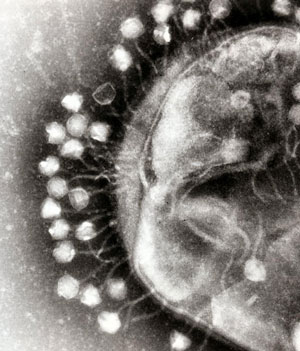 It may come as a bit of a surprise to learn that bacteria have an immune system. And like any immune system, the first challenge of the bacterial immune system is to detect the difference between 'foreign' and 'self'. A group of researchers has now revealed exactly how bacteria do this.
It may come as a bit of a surprise to learn that bacteria have an immune system. And like any immune system, the first challenge of the bacterial immune system is to detect the difference between 'foreign' and 'self'. A group of researchers has now revealed exactly how bacteria do this.
Apr 15th, 2015
Read more
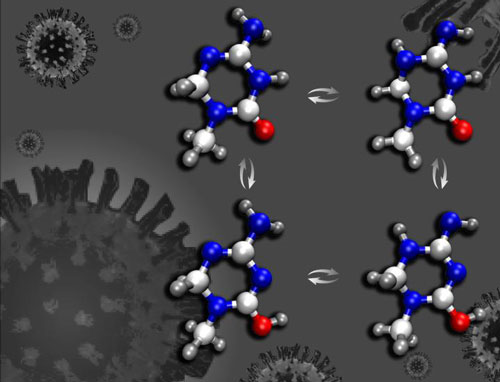 A newly developed spectroscopy method is helping to clarify the poorly understood molecular process by which an anti-HIV drug induces lethal mutations in the virus's genetic material. The findings could bolster efforts to develop the next generation of anti-viral treatments.
A newly developed spectroscopy method is helping to clarify the poorly understood molecular process by which an anti-HIV drug induces lethal mutations in the virus's genetic material. The findings could bolster efforts to develop the next generation of anti-viral treatments.
Apr 15th, 2015
Read more
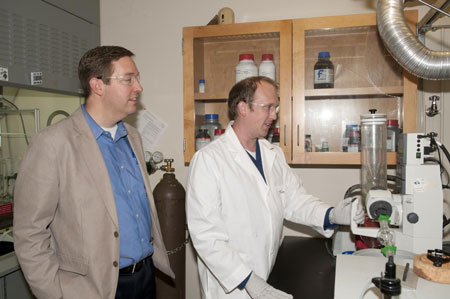 Researchers have developed a new way to use plant oils like olive and linseed oil to create polyurethane, a plastic material used in everything from foam insulation panels to tires, hoses and sealants.
Researchers have developed a new way to use plant oils like olive and linseed oil to create polyurethane, a plastic material used in everything from foam insulation panels to tires, hoses and sealants.
Apr 15th, 2015
Read more
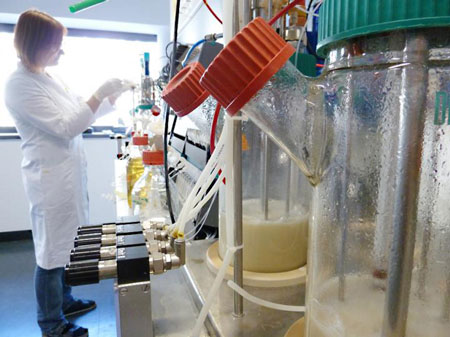 New method allows production of expensive grapefruit aroma Nootkatone biotechnologically from cheap sugar using a 'turbo-yeast'. The versatile, healthy and tasty substance is used in soft drinks, pharmaceutical products or even as an insect repellent.
New method allows production of expensive grapefruit aroma Nootkatone biotechnologically from cheap sugar using a 'turbo-yeast'. The versatile, healthy and tasty substance is used in soft drinks, pharmaceutical products or even as an insect repellent.
Apr 15th, 2015
Read more
A new study has demonstrated that genetically modified Salmonella can be used to kill cancer cells.
Apr 14th, 2015
Read more
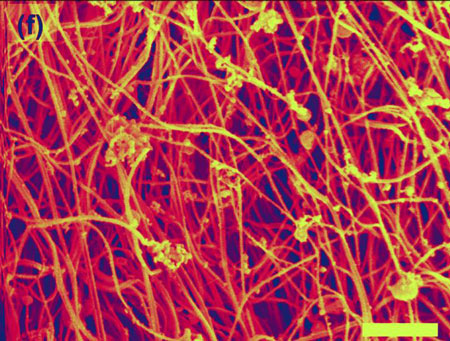 Skin is remarkably resistant to tearing and a team of researchers now have shown why.
Skin is remarkably resistant to tearing and a team of researchers now have shown why.
Apr 14th, 2015
Read more
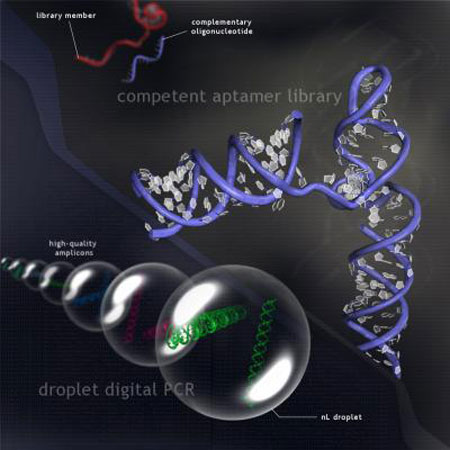 Scientists have developed a new technology that enables rapid discovery of aptamers, one of the fastest growing classes of diagnostic and therapeutic agents.
Scientists have developed a new technology that enables rapid discovery of aptamers, one of the fastest growing classes of diagnostic and therapeutic agents.
Apr 10th, 2015
Read more
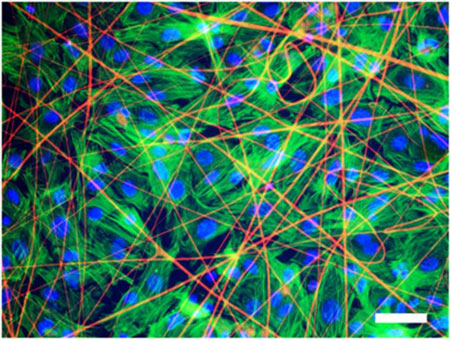 Genetically engineered fibers of the protein spidroin, which is the construction material for spider webs, has proven to be a perfect substrate for cultivating heart tissue cells.
Genetically engineered fibers of the protein spidroin, which is the construction material for spider webs, has proven to be a perfect substrate for cultivating heart tissue cells.
Apr 10th, 2015
Read more
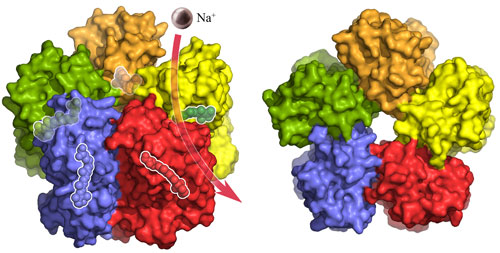 Scientists uncovered the atomic structure of KR2, a light-driven transporter for sodium ions which had only recently been discovered. Based on the structural information the team then identified a simple way to turn KR2 from a sodium into a potassium pump using simple means. Integrated into neurons, this could make KR2 a valuable tool for optogenetics, a new field of research that uses light-sensitive proteins as molecular switches to precisely control the activity of neurons and other electrically excitable cells using light impulses.
Scientists uncovered the atomic structure of KR2, a light-driven transporter for sodium ions which had only recently been discovered. Based on the structural information the team then identified a simple way to turn KR2 from a sodium into a potassium pump using simple means. Integrated into neurons, this could make KR2 a valuable tool for optogenetics, a new field of research that uses light-sensitive proteins as molecular switches to precisely control the activity of neurons and other electrically excitable cells using light impulses.
Apr 9th, 2015
Read more
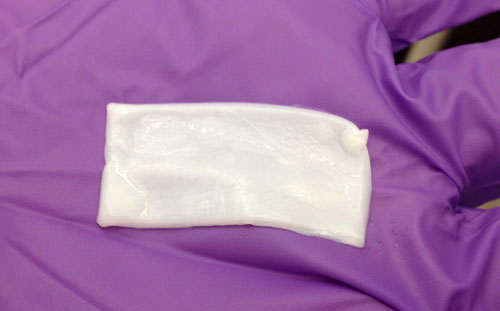 A researcher is commercializing her laboratory's innovative collagen formulations that self-assemble or polymerize to form fibrils that resemble those found in the body's tissues.
A researcher is commercializing her laboratory's innovative collagen formulations that self-assemble or polymerize to form fibrils that resemble those found in the body's tissues.
Apr 7th, 2015
Read more
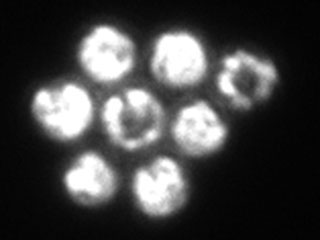 Biophysicists have revealed that fast-swimming, sulfur-eating microbes known as Thiovulum majus can organize themselves into a two-dimensional lattice composed of rotating cells, the first known example of bacteria spontaneously forming such a pattern.
Biophysicists have revealed that fast-swimming, sulfur-eating microbes known as Thiovulum majus can organize themselves into a two-dimensional lattice composed of rotating cells, the first known example of bacteria spontaneously forming such a pattern.
Apr 7th, 2015
Read more
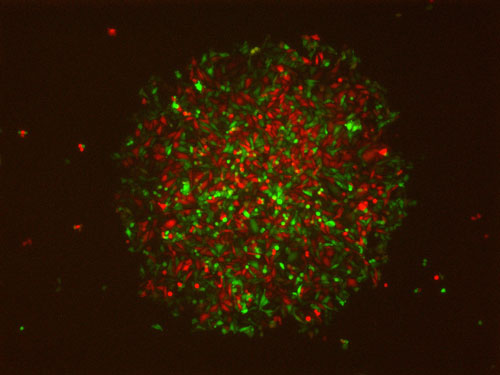 By mutually inhibiting signaling through a crucial developmental pathway, cells connected by an intercellular signaling circuit can be induced to change their fate.
By mutually inhibiting signaling through a crucial developmental pathway, cells connected by an intercellular signaling circuit can be induced to change their fate.
Apr 3rd, 2015
Read more
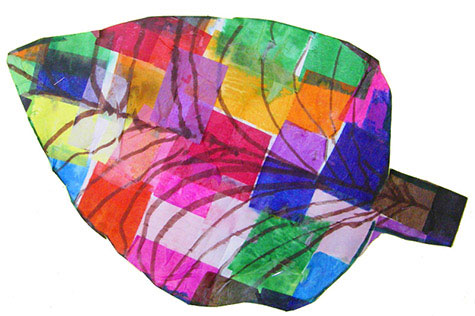 A small team of scientists can synthesize molecules that will absorb any color of sunlight from the oranges through the near-infrared, greatly expanding the palette of light-harvesting molecules.
A small team of scientists can synthesize molecules that will absorb any color of sunlight from the oranges through the near-infrared, greatly expanding the palette of light-harvesting molecules.
Apr 2nd, 2015
Read more
Researchers have developed a rapid, simple and safe method for generating large libraries of novel organic molecules in a fraction of the time required for traditional organic synthesis.
Apr 2nd, 2015
Read more
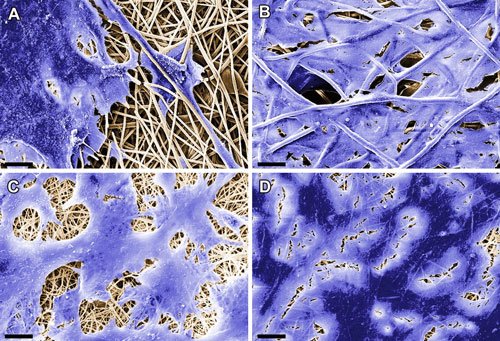 Regenerative medicine uses cells harvested from the patient's own body to heal damaged tissue. Fraunhofer researchers have developed a cell-free substrate containing proteins to which autologous cells bind and grow only after implantation.
Regenerative medicine uses cells harvested from the patient's own body to heal damaged tissue. Fraunhofer researchers have developed a cell-free substrate containing proteins to which autologous cells bind and grow only after implantation.
Apr 1st, 2015
Read more
Researchers uncovered a new kind of synergy in the development of the nervous system, which explains an important mechanism required for neural circuits to form properly. Their breakthrough could eventually help develop tools to repair nerve cells following injuries to the nervous system (such as the brain and spinal cord).
Apr 1st, 2015
Read more
The decades worth of data that has been collected about the billions of neurons in the brain is astounding. To help scientists make sense of this 'brain big data', researchers have used data mining to create http://www.neuroelectro.org, a publicly available website that acts like Wikipedia, indexing physiological information about neurons.
Mar 30th, 2015
Read more
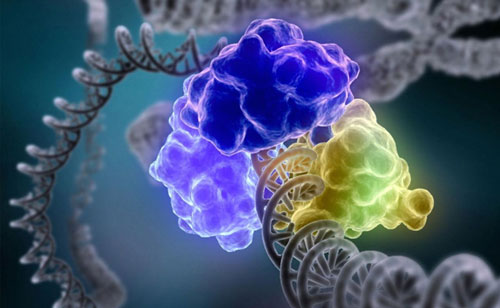 Researcher managed to clarify how DNA damage signaling works. The DNA molecule is chemically unstable giving rise to DNA lesions. That is why DNA damage detection, signaling and repair, collectively known as the DNA damage response, are needed. DNA repair consists of enzymes which find the damaged DNA and repair it. Some of them recognize the damaged bases and give signals to the other enzymes, which repair the DNA.
Researcher managed to clarify how DNA damage signaling works. The DNA molecule is chemically unstable giving rise to DNA lesions. That is why DNA damage detection, signaling and repair, collectively known as the DNA damage response, are needed. DNA repair consists of enzymes which find the damaged DNA and repair it. Some of them recognize the damaged bases and give signals to the other enzymes, which repair the DNA.
Mar 30th, 2015
Read more
 It may come as a bit of a surprise to learn that bacteria have an immune system. And like any immune system, the first challenge of the bacterial immune system is to detect the difference between 'foreign' and 'self'. A group of researchers has now revealed exactly how bacteria do this.
It may come as a bit of a surprise to learn that bacteria have an immune system. And like any immune system, the first challenge of the bacterial immune system is to detect the difference between 'foreign' and 'self'. A group of researchers has now revealed exactly how bacteria do this.
 Subscribe to our Biotechnology News feed
Subscribe to our Biotechnology News feed











